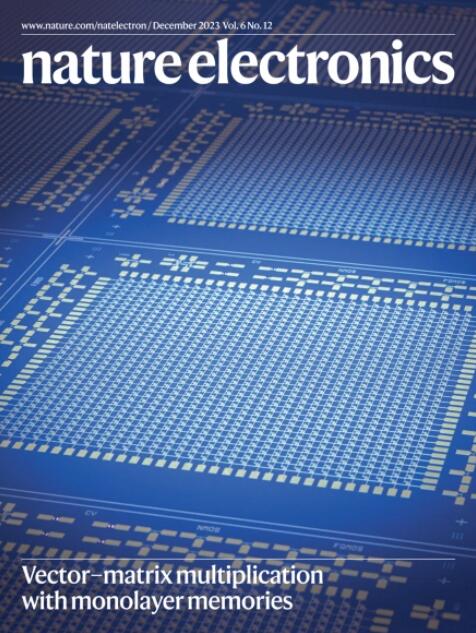A phased-array transceiver in 65 nm CMOS for 6G
IF 40.9
1区 工程技术
Q1 ENGINEERING, ELECTRICAL & ELECTRONIC
引用次数: 0

6G的65纳米CMOS相控阵收发器
来自东京科学研究所、松下工业公司、松下系统网络研发实验室和新科电气工业公司的研究人员用一种采用65nm节点互补金属氧化物半导体(CMOS)技术制成的注入锁定三倍移相器取代了振荡器缓冲器,该缓冲器通常用于此类系统中,具有高功率和芯片面积需求。除了作为移相器外,该器件还可以作为三倍频器。它直接连接到混频器,以最大限度地提高电压幅值和混频器输入。采用两个收发器集成电路的八元模块,每个模块有四个收发器,在通信距离为0.3 m时具有56 Gbps的最大数据速率,在154 GHz时具有26 dBm的有效辐射功率,而每个单元的功耗高达150 mW,面积为8.4 mm × 20 mm。原始参考:用于6G UE模块的150 GHz高功率密度相控阵收发器。在Proc 2025 IEEE VLSI技术研讨会&;电路(2025);https://www.vlsisymposium.org/
本文章由计算机程序翻译,如有差异,请以英文原文为准。
求助全文
约1分钟内获得全文
求助全文
来源期刊

Nature Electronics
Engineering-Electrical and Electronic Engineering
CiteScore
47.50
自引率
2.30%
发文量
159
期刊介绍:
Nature Electronics is a comprehensive journal that publishes both fundamental and applied research in the field of electronics. It encompasses a wide range of topics, including the study of new phenomena and devices, the design and construction of electronic circuits, and the practical applications of electronics. In addition, the journal explores the commercial and industrial aspects of electronics research.
The primary focus of Nature Electronics is on the development of technology and its potential impact on society. The journal incorporates the contributions of scientists, engineers, and industry professionals, offering a platform for their research findings. Moreover, Nature Electronics provides insightful commentary, thorough reviews, and analysis of the key issues that shape the field, as well as the technologies that are reshaping society.
Like all journals within the prestigious Nature brand, Nature Electronics upholds the highest standards of quality. It maintains a dedicated team of professional editors and follows a fair and rigorous peer-review process. The journal also ensures impeccable copy-editing and production, enabling swift publication. Additionally, Nature Electronics prides itself on its editorial independence, ensuring unbiased and impartial reporting.
In summary, Nature Electronics is a leading journal that publishes cutting-edge research in electronics. With its multidisciplinary approach and commitment to excellence, the journal serves as a valuable resource for scientists, engineers, and industry professionals seeking to stay at the forefront of advancements in the field.
 求助内容:
求助内容: 应助结果提醒方式:
应助结果提醒方式:


